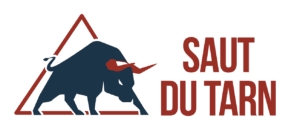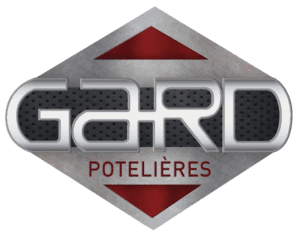Saut du Tarn: Handling and Mowing
ORIGIN: GARRIGOU, MASSENET ET COMPAGNIE
In 1824 the land near to the Saut du Sabo was sold to “Garrigou, Massenet et Compagnie”, on which it would construct the Saut du Tarn factories.
The business that would one day become FORGES DU SAUT DU TARN started out with 2 carburising furnaces and 22 hydraulic trip hammers.
1824 - 1870: MANAGEMENT CONSOLIDATION
The early days of the company involved numerous management changes. Léon Talabot became the company’s 3rd manager in 1831, with the aim of settling the company’s management.
In 1870 the factory became the “Société anonyme des aciéries du Saut du Tarn” when Jules Talabot, who had in turn replaced Léon Talabot, was succeeded by Charles Vissac. This preceded a genuine turning point for Saut du Tarn.
1870 - 1883: DIVERSIFICATION, MODERNISATION AND GROWTH
Charles Vissac would diversify company activity by investing in a new springs workshop.
At the same time the factory produced 70 tonnes of steel in the form of 100,000 files and 200,000 scythes and sickles. The latter category would be replaced by the production of shovels and picks, made possible through investment in new production resources (turbine, motor, roller, steam-hammer).
In 1876, Adolphe Epinasse took over running the factory. He modernised the equipment and manufacturing processes, notably by investing in Siemens open-hearth furnaces. This would earn him the bronze medal at the 1878 International Exhibition, whilst the products themselves would receive the gold medal.
The project for the construction of a railway line near to the factory motivated the management to purchase a mill so that they no longer needed to import raw materials.
1883 - 1914: THE ENERGY REVOLUTION
By 1883, in spite of production increases, falls in market retail prices combined with French political and social crises slowed down the factory’s activities. This situation was not helped by delays to the construction of the railway line. Things would not calm down until 1895.
With energy requirements increasing, the next decade would see the opening of 3 hydroelectric power stations which would combine with the purchase of additional water access rights to power the new machine-tools and an electric Héroult furnace. These structures would be employing 1,300 workers by 1910.
1914 - 1945: COMPLEX MANAGEMENT IN A FRAGILE CONTEXT
Saut de Tarn would find itself obliged to contribute to the war effort. In order to meet civilian needs, 2 Martin furnaces would be added along with the acquisition of a new factory and hydroelectric power station. The company would be rewarded for its “peace production”.
Saut du Tarn would not escape the post-war crisis and would have to lay off a third of its workers. However, thanks to diversification and customer loyalty, the crisis would not affect them so badly.
AFTER 1945: COPING WITH THE POST-WAR SITUATION
After the Second World War, the mechanisation of the agriculture sector pushed the company to develop its product ranges to include wear-parts for agricultural machinery.
In the 1980s, Europe was affected by a steel industry crisis which would weaken many businesses in the sector, forcing them to further specialise their product ranges and production. In this context, the company became a part of Ets EXPERTON-REVOLLIER and took on a new name: FORGES DU SAUT DU TARN.
Thanks to its staff, the company continued to develop product ranges and industrialise its processes, notably in the manufacture of fork tines, and is now positioned as a leading expert in the Handling sector with sales across the whole of the globe.
Gouvy: Tillage specialist
ORIGIN: GOFFONTAINE
On 15 December 1751, Pierre-Joseph GOUVY obtained a licence to build a steelworks in Scheidt, to the East of Sarrebrück. The company then incorporated the surrounding forges, thus becoming Goffontaine in 1775.
1751 - 1850: A FRENCH COMPANY WITH RECOGNISED EXPERTISE
At the start of the 18th century, the quality of Goffontaine’s production was rewarded at the first Paris Exhibition of 1800 and then again at the 1806 French industrial exhibition.
This reputation would be the foundation for its maintained solidity with only one minor disturbance to its activities, when the Sarthe was occupied by Prussia in 1815. The two young GOUVY brothers wanted to keep the company on French territory and initially responded by purchasing a mill in Sarralbe, which they transformed into a forge such that a part of the company could remain in France. Goffontaine became French again in 1850 when its shares were purchased through the newly founded Gouvy Frères et cie.
1850 - 1914: DEVELOPMENT AND DIVERSIFICATION
In 1858 as it continued to expand, GOUVY acquired the Hombourg-Haut forge, its 3rd factory, thus raising its production output to 940 tonnes of steel per year, which would then double over the following decade.
In 1870, Alsace-Lorraine was occupied by Prussia. Very much attached to their French identity, the GOUVY brothers preferred to transfer their activities back onto French territory. As a result the first Goffontaine forge would be sold to finance the purchase of land in Dieulouard in the Moselle, ideally located between a railway line and a canal.
The following 30 years would be marked by exponential growth for GOUVY, notably through the diversification of its activities; the Dieulouard factory would multiply its production output by a factor of eight.
1914 - 1945: A SOLID HEADING THROUGH STORMY TIMES
Despite GOUVY’s rapid growth, the two wars would have a major effect on business. Population movements combined with the need to repeatedly move the workshops from one factory to another, would lead the company into difficulties on various occasions.
However, thanks to clever management, the centralisation of resources, improvements to equipment and techniques, and the concentration of activities and resources at the Dieulouard factory, production in 1946 would return to 90% of its pre-war output.
AFTER 1950: RENEWAL AND EXPANSION
By 1950, GOUVY would start to expand its activities again and continue to operate independently in the agricultural machinery sector up to 2010 when it became a part of Ets. EXPERTON-REVOLLIER and began to contribute to the expansion of FORGES DU SAUT DU TARN’s product ranges, which had specialised in Handling products up to then.
Gard: Vineyard Production specialist
ORIGIN: GARD PERE ET FILS
In 1875, the blacksmith Ferdinand GARD expanded his business, with the Languedoc wine industry as its target clientele. Just after the end of the First World War, GARD began to build its name with the creation of the “POTELIERE”, the first specialised vineyard plough.
1950 - 1960: GROWTH AND PRODUCT RANGE EXPANSION
Building on this experience, and making the most of the expansion of the agricultural tool market in response to the mechanisation of French agriculture, GARD invested in the development of various new products designed to meet the new needs of the agriculture sector, such as the Rotary mower in 1953 and its range of disc harrows. GARD Père et Fils positioned itself as a reference on the agricultural wear-parts market, specialising in tillage and vineyard production.
1970 - 1990: CHANGES TO THE AGRICULTURAL MARKETS
Thanks to its dominating position and the quality of its production, the company prospered right into the 1970s. In spite of a move towards export to developing countries, the company would see a significant drop in business in line with that of the market sector. Faced with this situation, GARD SA merged with VIAUD-LEVESQUE, DURO and DEGUILLAUME in October 1983 and specialised in motorised agricultural machinery for tillage and clearing applications.
1990 - 2024: RECOVERY: OPPORTUNITIES DURING TROUBLED TIMES
In February 1993, M. LEBRUN took over the running of GARD which was struggling as a SARL (Simplified Corporation). The company recovered its previous economic growth trend until problems would catch up with it in 2024. GARD was therefore bought out by the machinery specialist FORGES DU SAUT DU TARN Group to ensure the continuation of the manufacture of wear-parts for GARD agricultural machines.